Total War: Rome 2 Review
While 2011’s Total War: Shogun 2 seemed to simplify mechanics compared to previous iterations, the resulting focus and elegance of design made it one of the best games in the series. Two years later, and Creative Assembly have released a sequel that attempts to apply these streamlined gameplay elements to a much larger, more ambitious scale and setting. Europe, East Asia and North Africa during the Roman empire circa 300 BC is the setting for the latest offering in this long running series, a direct sequel to 2004’s lauded Rome: Total War. While the vast map, myriad factions and varied units make for an undeniably epic strategy game, an assortment of technical issues and a few over simplifications of mechanics prevent Rome 2 from reaching its vast potential in its current state.
In most regards, Rome 2 follows in the design footsteps of its predecessors very closely. You build an empire using force and diplomacy on a civilization-esque Campaign Map, where alliances, raising armies and bolstering cities allow you to view the substantial game world in broad strokes. When it comes time to defend what you have established or expand your empire, you take to the battlefield in real-time, controlling individual units to victory or defeat. The core design concept remains outstanding, with crumbling alliances, dastardly betrayals and tenuous trade agreements on the campaign map adding context and meaning to already epic battles involving thousands of troops. A challenging prologue campaign introduces you to the game’s basics, but after this you are thrown into the deep end to figure the nuances out for yourself.
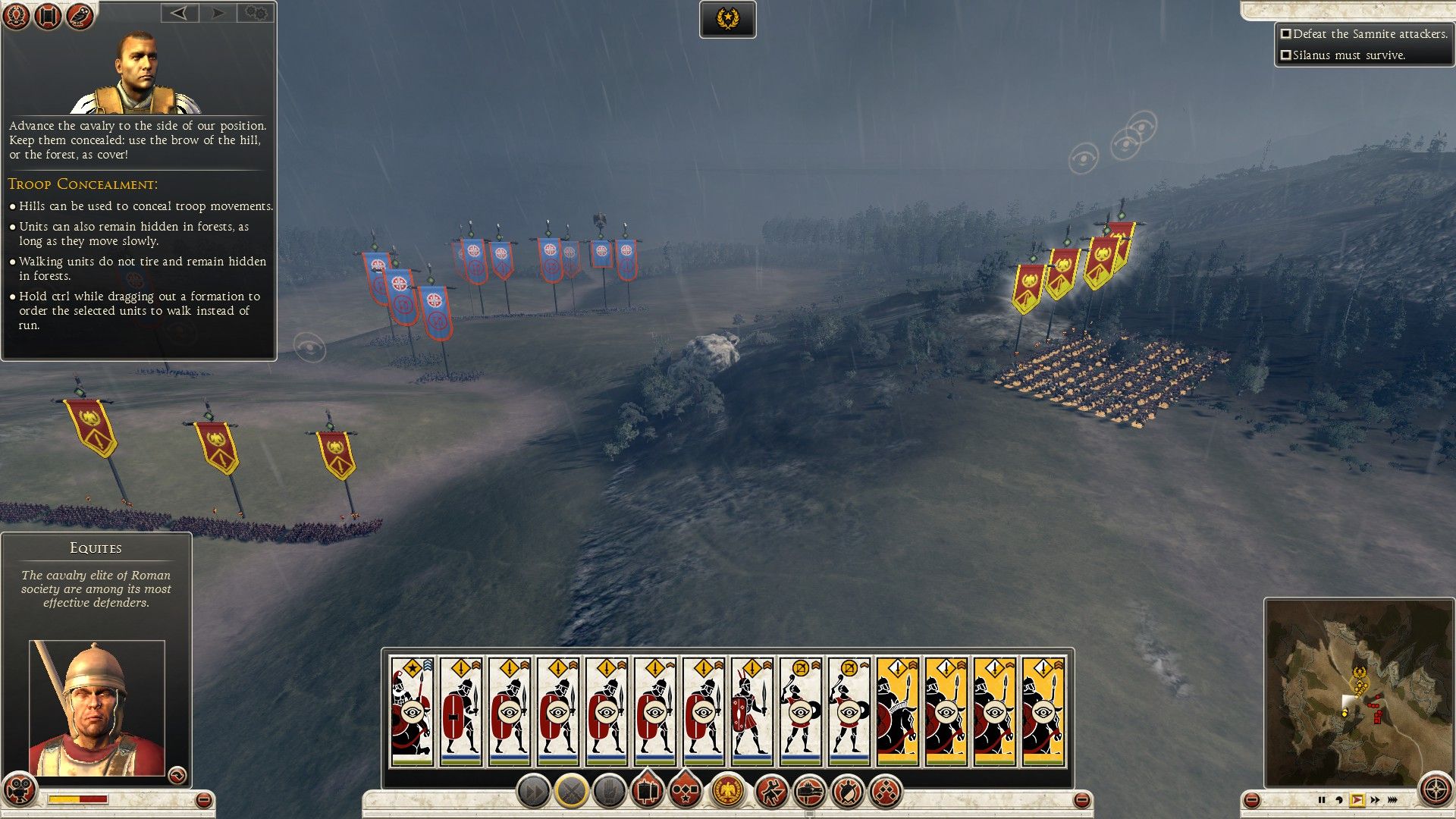
Line of sight allows many ambushes
While Rome 2 does little to turn this tried-and-true design on its head, changes have been made to both the campaign map and battle mode with mixed results. The elaborate system of choosing family members to serve different roles for your faction that worked so well in Shogun 2 is now gone, replaced by an obtuse system of politics that has no clear purpose or impact. When generals gain veterancy in battle, there is no clear skill tree to follow when choosing upgrades; instead you are left with initially unhelpful skills that provide bonuses to unexplained attributes like “zeal” and “authority.” Religion no longer plays a role in the happiness of your people; instead you must worry about culture. There are no longer four turns a year, instead one turn takes one year, removing seasons from the equation and reducing the strategy involved in planning when to move troops into enemy territory. These changes feel like unnecessary simplifications of previous mechanics, although they are relatively minor in the grand scheme of things.
Fortunately, there have been changes for the better as well. The number of armies and agents you can field is now tied directly to the size of your empire, and you can no longer split your forces unless you have two generals present. This pushes you to think more carefully about where to station your armies, and encourages diplomatic agreements that prevent two or three front wars that stretch your finite forces thin. The campaign map is absolutely enormous, and each of the dozens of provinces are divided between a couple of settlements and a capital city, all of which must be captured for your faction to gain full control of the province. Once in control of a province, you can issue an edict which grants a bonus in a single area. Victory conditions for each of the nine playable factions are quite varied and tied to the needs of each faction; Carthage, for instance, must capture a large number of port settlements as one of its victory conditions. The size of the map and multi-pronged victory conditions mean that a single campaign might take dozens of hours to complete.
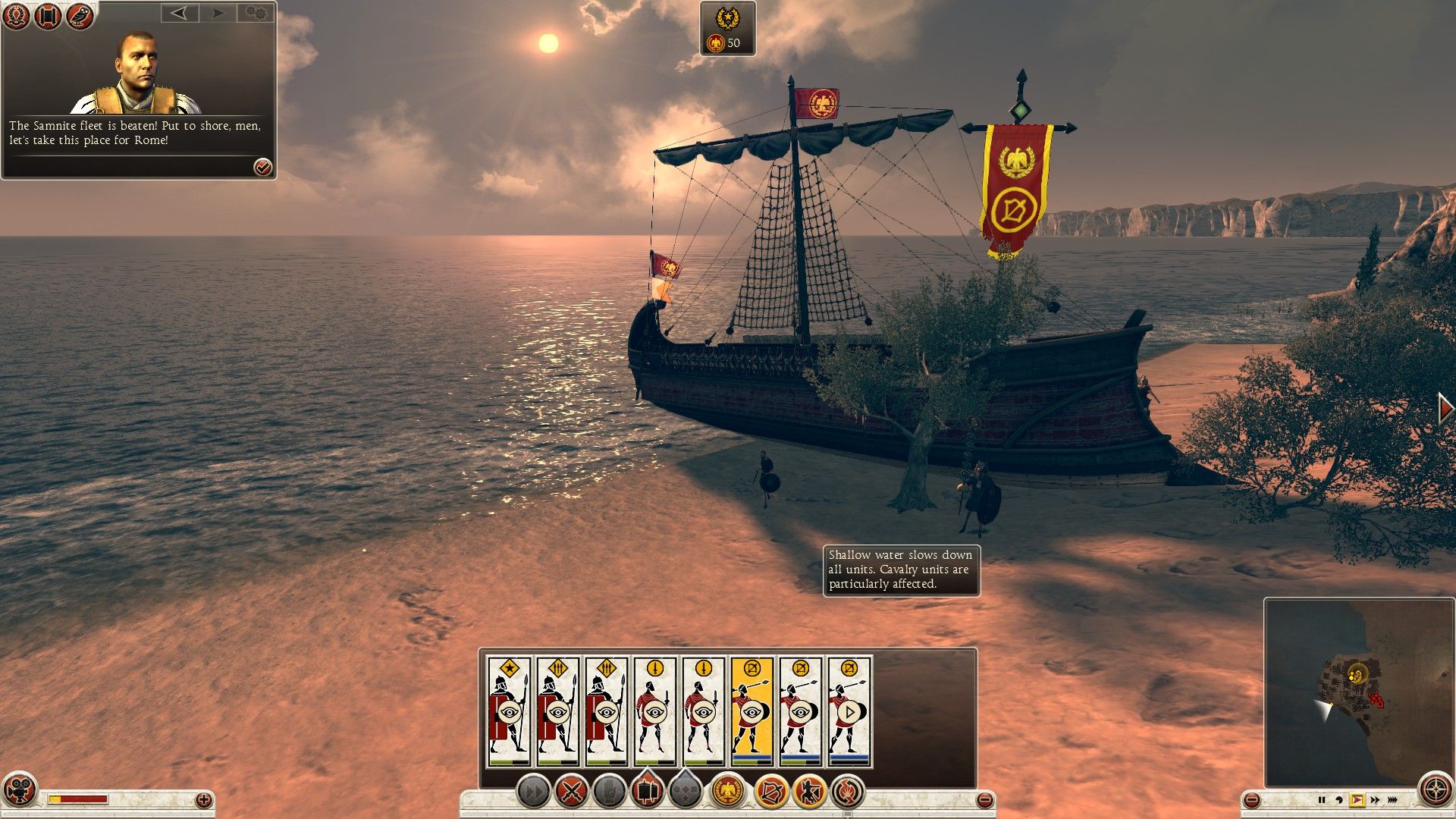
Combined land/sea battles create further strategic flexibility
While it is disappointing that the political machinations of the Roman era don’t have much of a role in Rome 2, there have been a good number of improvements on the military side of things. You can adjust the stance of armies and fleets to alter how far on the campaign map they can travel, with reductions to morale resulting from stances allowing for greater movement each turn. You can now move an army onto the ocean to instantly board it onto transport ships regardless of whether you have a dedicated fleet nearby, although sea-bound armies will suffer attrition and are vulnerable to attack from enemy fleets. The biggest advantage of the ability to move armies onto ships like this are the new combined naval-land battles.
It is clear that the real-time battles have received the most care and attention compared to previous Total War games, and the effort shows. The terrain you fight on is impressively varied, from the deserts of North Africa to the dense forests of Northern Europe to the colourful Mediterranean coast. The variety of urban encounters is equally great; battles in minor settlements have a unique flavor as there are no large walls, instead you fight in the streets, positioning units to prevent the enemy from capturing the single control point. One questionable change is that every battlefield, urban or rural, now contains at least one control point that if held for long enough will end the battle. This makes sense in urban environments, but having to contend with this in rural landscapes reduces tactical challenge, as instead of using the terrain to your advantage you must rush to the capture point and fight there. This is particularly puzzling in light of the new line of sight mechanic that allows units to hide behind hills that block them from the sight of enemy troops, creating new possibilities for ambushes.
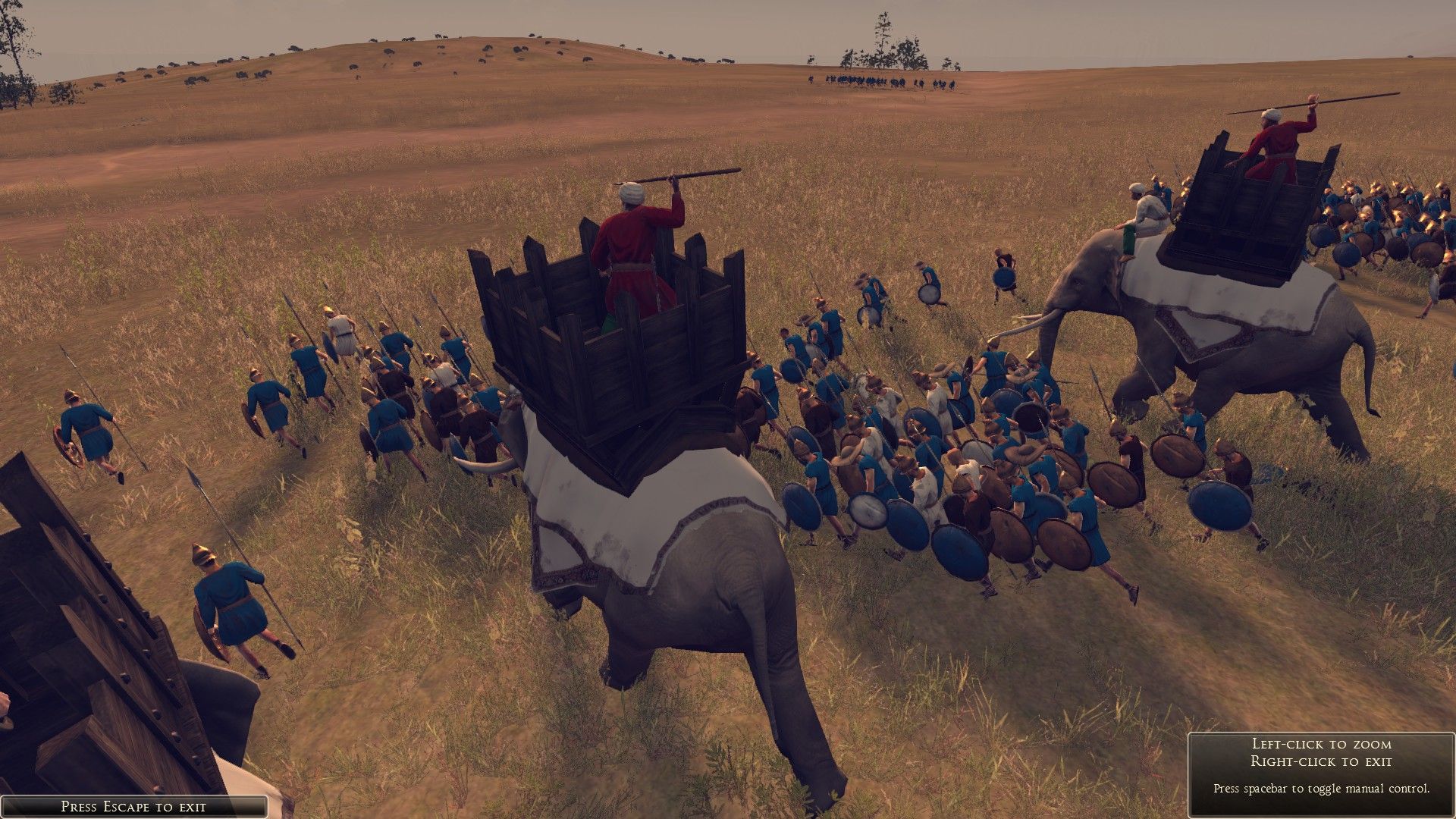
Charging elephants can cause major damage to enemy morale
The amount of army variety is equally impressive, as each of the nine playable factions have different units. Play as Macedon, and you will be using primarily spear infantry, while the factions in Northern Europe will have access to powerful and versatile Cavalry. As you progress further into a campaign, siege equipment will become available, with factions like Carthage gaining access to siege towers and ballista. Unit control seems to have been tightened up a bit so orders are carried out more immediately, and the options for formations and unit speed are as robust as ever. One excellent addition is the “cinematic camera” which locks the camera at close range to one of your units, allowing you to swivel around and observe the action up close and personal. Use the cinematic camera with a Siege weapon and you can direct individual shots, with the camera following projectiles through the air.
There is one significant problem when it comes to playing Rome 2 on both the campaign map and in battles: the AI of computer controlled factions is currently quite buggy. On the campaign map, computer controlled factions can be very passive, attacking only unguarded cities, or sending suicidal attacks of one or two units against heavily garrisoned settlements. During sieges, the AI will sometimes fail and simply stand outside the city walls without moving. When enemies attack a city using a fleet, they might sail back and forth for ten minutes before finally deciding on a place to land. Issues with AI aren’t constant, but when they crop up they can be ruinous.
If you would rather be facing off against another human player in the campaign mode, both the versus and co-op options remain. In co-op, you and another player are permanently allied and must complete a set of objectives similar to what you face in the singleplayer campaign. In a versus campaign you must try and capture the home province of the other player. While these have the potential to be the most enjoyable modes in Rome 2, I was unable to proceed past four or five turns in multiplayer campaigns due to pervasive desync issues where one player would somehow get ahead or behind of the other. It also seems to take an inordinate amount of time for the computer controlled factions to cycle through their turns in co-op, one downside to the gigantic number of different factions that exist in the game.
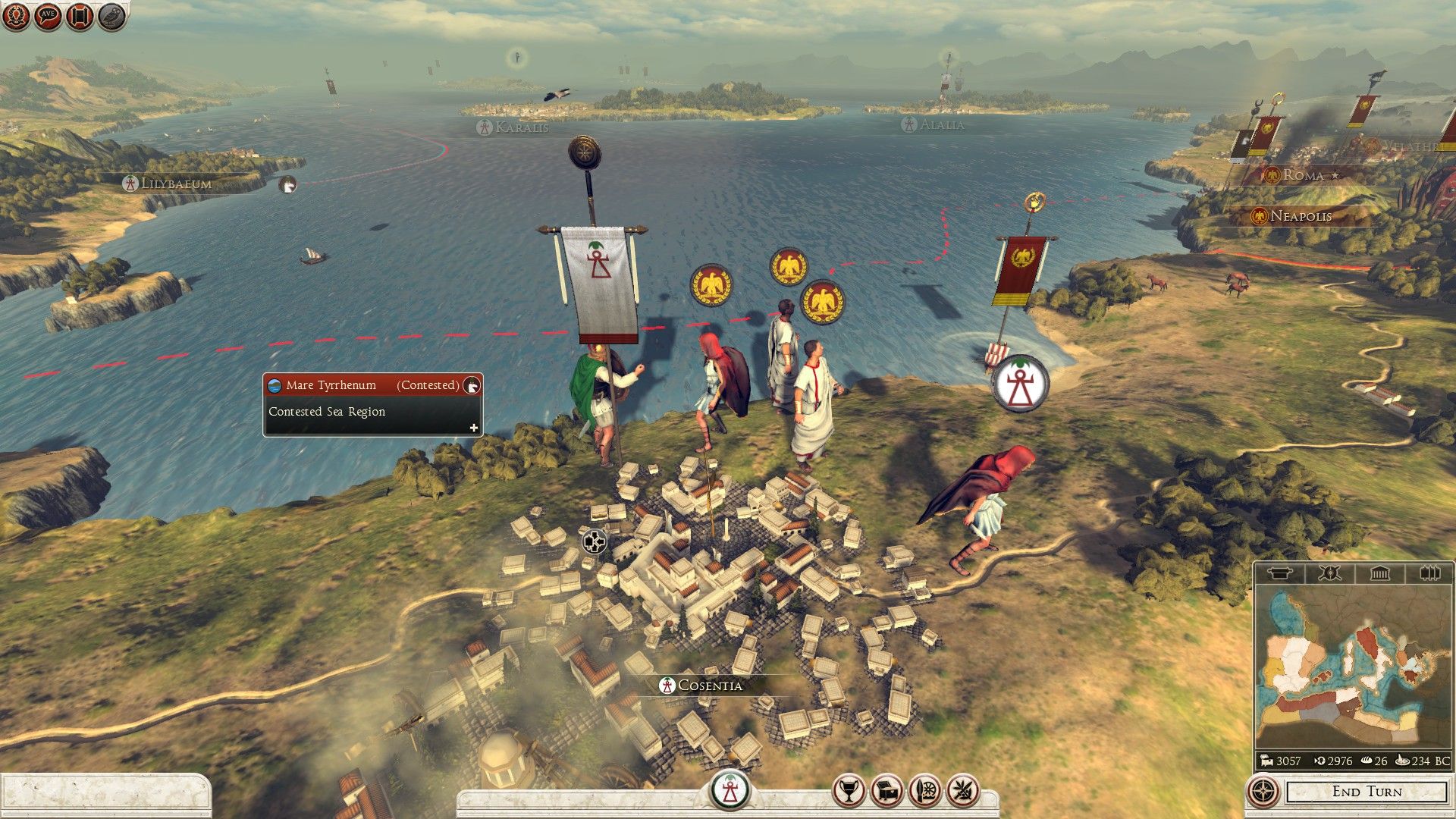
Roman agents are numerous and nefarious
Fortunately multiplayer battles fare much better in Rome 2’s current state. The elaborate progression of Avatar-Conquest has been replaced with a more straightforward but much more flexible custom battle system. You can construct any kind of battle you want that involves any combination of human or computer-controlled armies on either side. Want to join up with a friend and lay siege to an AI-controlled Rome? You can do that. Want to fight an all-cavalry battle in the desert? Sure. The number of combinations of maps, factions and game types allow for hours of entertainment playing with Rome 2’s excellent battle mechanics, and when you are fighting with and against humans the AI quirks are of no consequence.
The custom battles can also be fought solo with and against computer-controlled armies, although the problematic AI makes this a less than desirable alternative to human competition. Historical battles fare significantly better, as the AI has been pre-scripted to behave in a certain way during these historical encounters. There is no shortage of ways to play around with Rome 2’s robust real-time battles, and if Creative Assembly manage to fix the artificial intelligence through patches there will be hours and hours of fun to be had here.
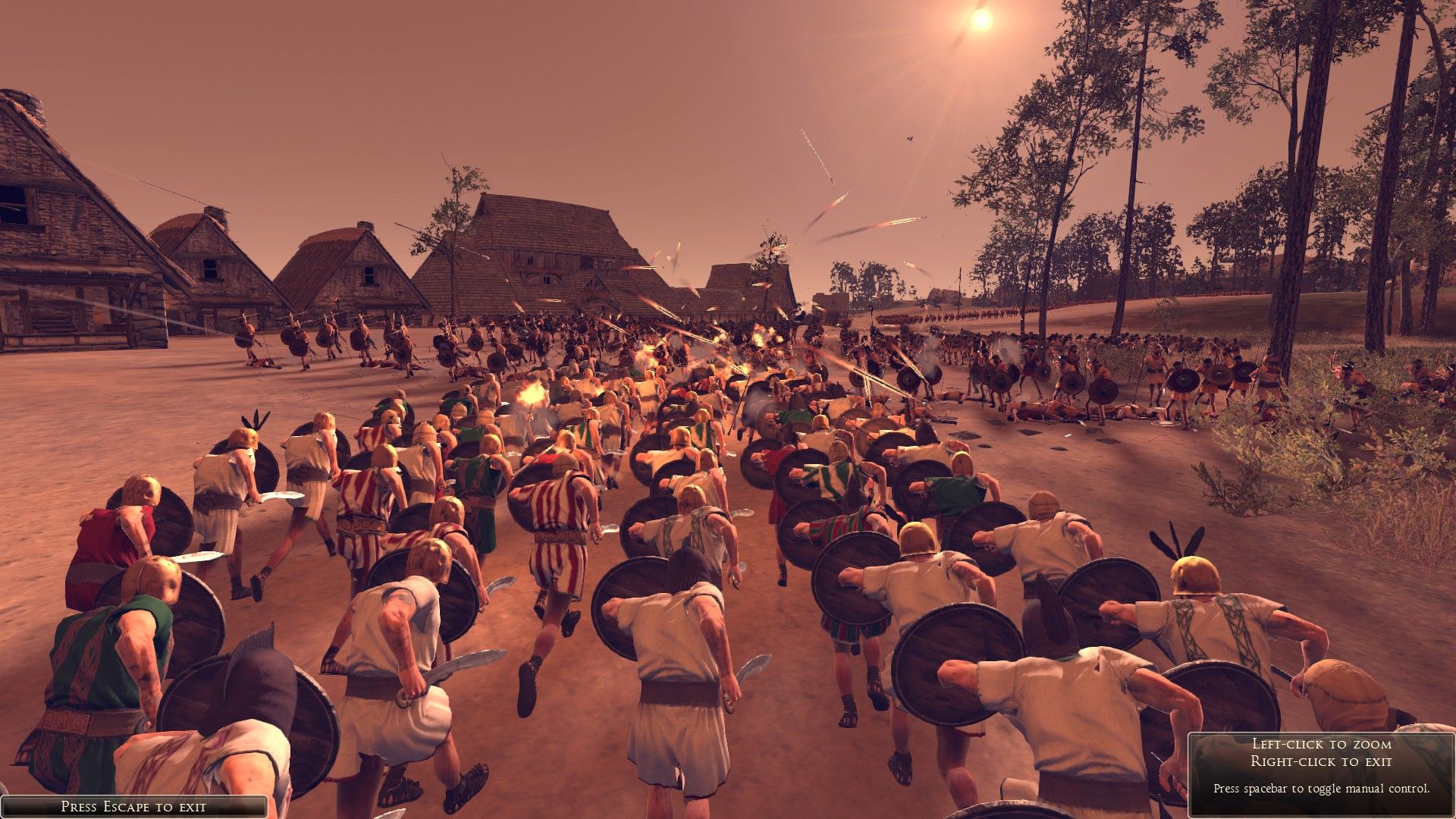
Flaming projectiles fill the skies in most battles
Visually Rome 2 looks similar to later builds of Shogun 2, although it runs noticeably worse. Some of this can be attributed to the much larger and more detailed towns, although I experienced some severe issues with units lagging in large battles despite my frame rate remaining at acceptable levels. I experienced a handful of crashes, although they seem to have ceased after one of the early patches Creative Assembly released since launching the game. The game scales surprisingly well to weaker hardware; I was able to get it running well on my two year old mid-range laptop with a dual core CPU and GT540m mobile GPU. The amount of visual detail is impressive, especially given the variety of terrain and scale of the battles. Units animate very well; the sun will glint off the shields of soldiers as they raise them to defend against an incoming barrage of flaming projectiles, and formations looks authentic and effective.
Total War games have a track record of excellent music both in and out of battles, and Rome 2 continues this trend. The music fits the setting perfectly, and underlines the grandeur of the battles. The audio is quite strong across the board, from the thunder of troops marching across a plain to the cries of men in the midst of a heated skirmish. Voice acting is in English with a variety of vague European accents that fit the setting well enough, although you will mostly be interested in what is actually being said since voice work informs you of important occurrences both on and off the battlefield.
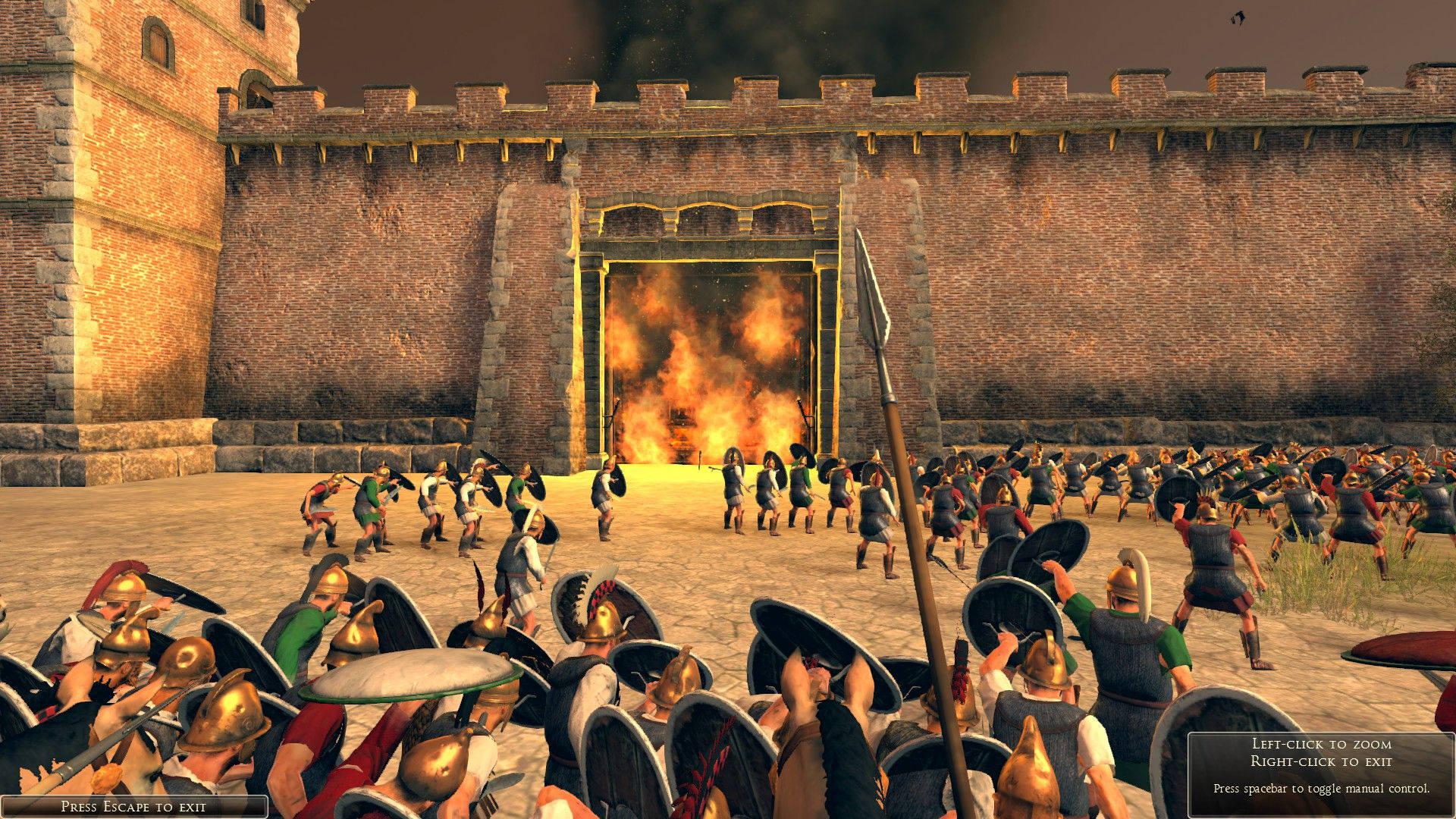
City sieges are some of the most memorable battles in Rome 2
While Rome 2 sacrifices some of the focus and elegance found in 2011’s Shogun 2, the sheer scale and variety found within the game is deeply impressive. Newcomers to the series might be better served starting with Shogun 2, but veterans will quickly become adjusted to the new interface and changes made to this year’s release. It is difficult to recommend Rome 2 in its current state, however assuming Creative Assembly make good on their promise to release weekly patches until the game is fully functional in a month or two it will be well worth the asking price for Total War junkies. Rome was not built in a day, and the same holds true for this slightly broken but grandiose strategy sequel.
